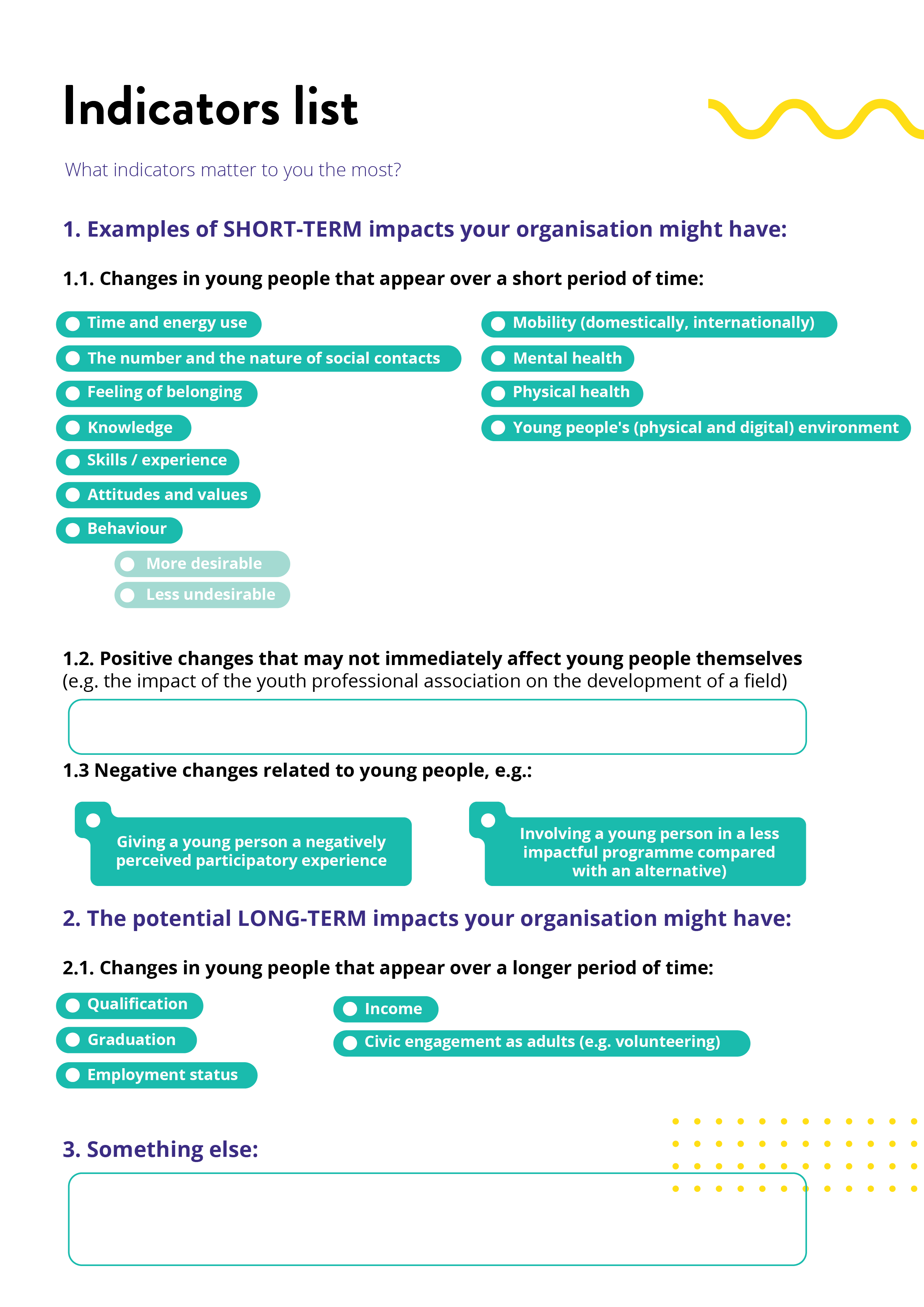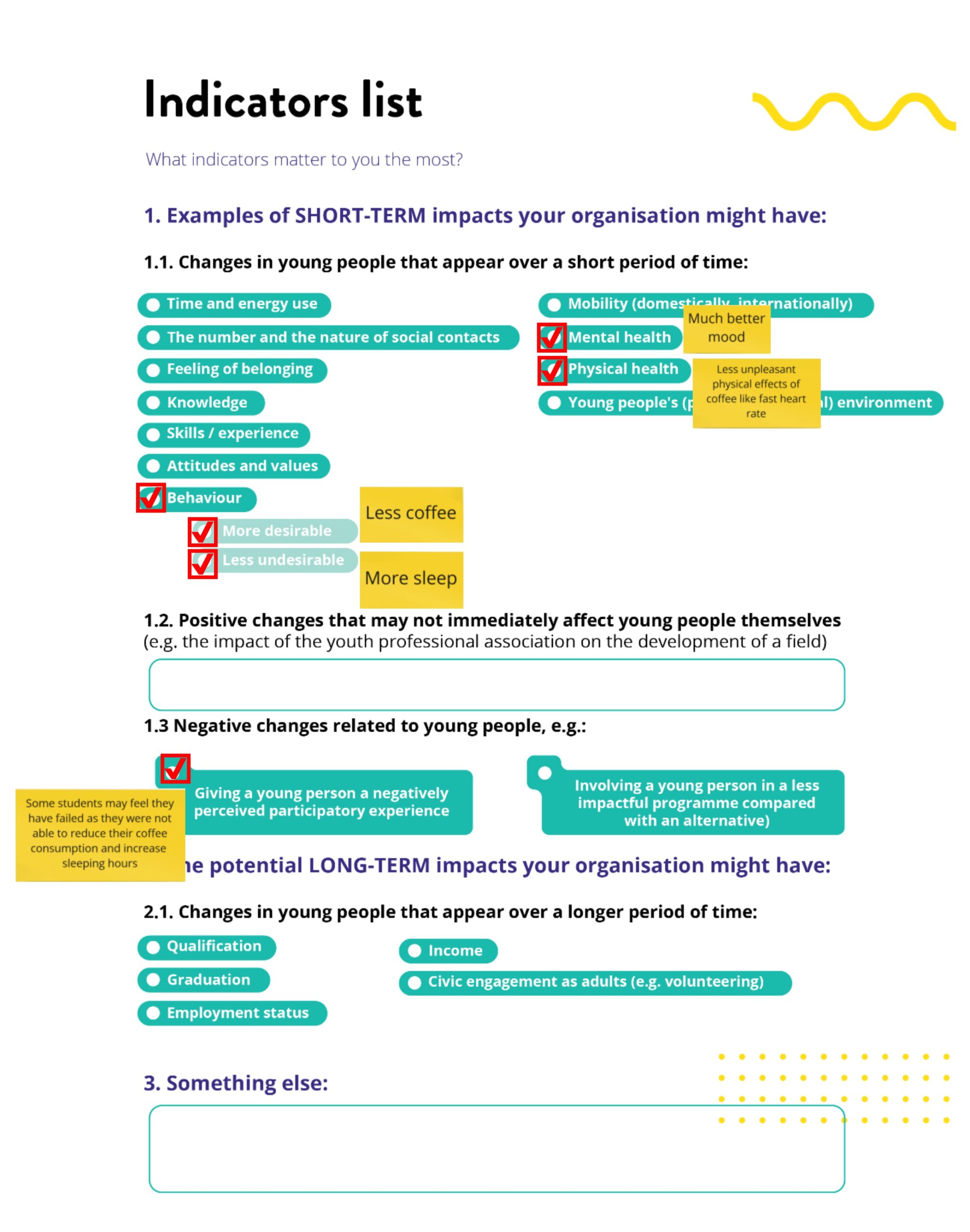A list of impact indicators helps you determine, measure and communicate the positive changes that you aim to achieve with and for young people.
So... what is it?
I’m glad you asked!
The indicators indicate whether you´re contributing to the positive changes in the lives of young people. In other words – the indicators show you whether your organization is moving in the right direction when organising activities that aim to create a positive impact.
Compiling and using a list of indicators is essential if you want to first specifically determine what your organization’s impact is about and then collect necessary information accordingly. The list should be created before measuring your impact so that you know what are the indicators that you will collect information about.
The indicators in the following list are about the changes in the lives of youth as this toolbox is mainly meant to help the organisations working with young people. If you´re working in any other field, you can compile your own list of indicators while using this list as an inspiration.
Sounds cool! How does the tool look like?

So it’s just a list? What should I do with it?
You can watch the video to get an idea of what the tool is about or continue reading after the video player.
In a nutshell…
Use the list as a menu or catalogue to choose the indicators that match the best these changes that you would like to contribute to in the lives of young people. Then decide on the exact wording of the chosen indicators. Finally, set your goals and start collecting information according to these indicators.
Variations of use
In the beginning, you may not be able to collect information on whether the youngsters’ situation or behaviour changed. Start with what is possible to collect (e.g. whether the participants think their opportunities will change as a result of attending your programme) and figure out more precise indicators and research methods later on.
In more detail
- Choose these indicators from the list that describe the best the positive changes you would like to create or negative changes you would like to prevent from happening.
- Work with each of the chosen indicators to make it more specific to match precisely the changes you would like to achieve and measure. Add the final wordings also to the “Outcomes” and “Impact” sections of your theory of change.
- Set a measurable goal per each indicator, e.g. what you would like to achieve and by when.
- Decide on how you will collect information about the progress and results regarding each of the indicators.
None of the indicators there really work for me, though. Couldn’t I come up with my own?
Of course! Here is how you can come up with your own list of indicators.
To develop new indicators, other templates in this toolbox will be super useful for you, especially:
- the upper part of the goal tree,
- the “Outcomes” and “Impact” sections of the theory of change.
What would you need or like to change about their experiences to achieve more positive impact? In other words – what should you change in your activities to achieve your impact goal better?
How do I know that the chosen impact indicator is appropriate?

I think I’m starting to get it now. Could I see an example just to be sure?
Of course. Here is an example about a social enterprise that aims to increase the well-being of university students.

And here’s an example of a cyber-bullying prevention programme.

Okay thanks. I understand how it works now but I’m still not sure if I should use this for my project or not. When and why should I use the tool?
Why and when should you use it?
Why use it?
☑ To understand if the project is moving in the right direction and has the desired impact. By comparing your indicator results to your goals you can decide if and what to change.
When to use it?
☑ After you have decided what are the problems you are inspired to tackle, what you would like to positively change and who are the stakeholders that you will need to influence.
☑ Before you decide how to collect information about the impact of your activities.